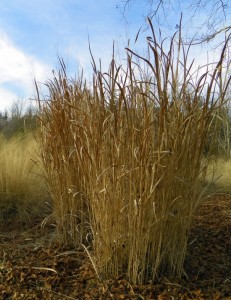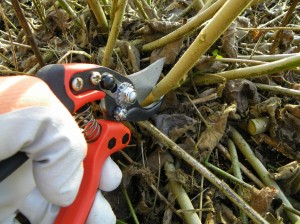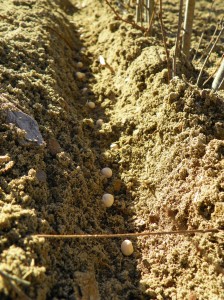Winter Gardening Tips and Tasks
go.ncsu.edu/readext?196134
en Español / em Português
El inglés es el idioma de control de esta página. En la medida en que haya algún conflicto entre la traducción al inglés y la traducción, el inglés prevalece.
Al hacer clic en el enlace de traducción se activa un servicio de traducción gratuito para convertir la página al español. Al igual que con cualquier traducción por Internet, la conversión no es sensible al contexto y puede que no traduzca el texto en su significado original. NC State Extension no garantiza la exactitud del texto traducido. Por favor, tenga en cuenta que algunas aplicaciones y/o servicios pueden no funcionar como se espera cuando se traducen.
Português
Inglês é o idioma de controle desta página. Na medida que haja algum conflito entre o texto original em Inglês e a tradução, o Inglês prevalece.
Ao clicar no link de tradução, um serviço gratuito de tradução será ativado para converter a página para o Português. Como em qualquer tradução pela internet, a conversão não é sensivel ao contexto e pode não ocorrer a tradução para o significado orginal. O serviço de Extensão da Carolina do Norte (NC State Extension) não garante a exatidão do texto traduzido. Por favor, observe que algumas funções ou serviços podem não funcionar como esperado após a tradução.
English
English is the controlling language of this page. To the extent there is any conflict between the English text and the translation, English controls.
Clicking on the translation link activates a free translation service to convert the page to Spanish. As with any Internet translation, the conversion is not context-sensitive and may not translate the text to its original meaning. NC State Extension does not guarantee the accuracy of the translated text. Please note that some applications and/or services may not function as expected when translated.
Collapse ▲
Panicum and other ornamental grasses should be cut back near ground level before the end of February.
In many areas winter is a cold and bleak time to stay inside and not even contemplate working in the garden. Fortunately this is not true in the southeast. In fact, mild winter days can be one of the nicest times of the year to work outside in our region. There is plenty to be done to prepare for the growing season to come so why not get outside and garden today?
In the Landscape
In the landscape, winter is a time to clean up, plant and transplant trees and shrubs, and prune or cut back many types of plants. Brown, dead stems and leaves of perennials and ornamental grasses should be cut down before new growth begins. It also a good idea to cut back liriope and muhly grass now, even though their leaves often stay green during winter. Trimming back perennials and grasses can be done anytime during winter, but should be completed by early March since new leaves often begin to emerge as spring approaches.
Summer flowering shrubs like beautyberry, butterfly bush, hybrid tea and Knockout roses, and summer blooming spires can be pruned in February. Cutting these shrubs back hard to a low framework 1’-2’ high will encourage lots of new growth and heavy flowering for the summer. Vitex and crape myrtles can also be pruned lightly now by trimming off seed heads and removing crossing branches, but avoid hacking these trees back to bare trunks.
This practice ruins their natural shape and can promote insect and disease problems. If your crape myrtle or Vitex is too large for the location where it is planted, consider moving it and replacing it with a more suitably sized variety.
Winter is not the time to prune spring blooming shrubs like forsythia, azaleas, Indian hawthorn, camellias, and most hydrangeas. Pruning these plants now will remove this spring’s flowers. To avoid disrupting the spring flower show wait to prune these shrubs after they finish blooming. Exceptions are the new ever-blooming types of hydrangeas like Endless Summer, which will bloom even if cut back, though flowering will be delayed until midsummer. The old fashion PeeGee hydrangea and newer selections of Hydrangea paniculata such as ‘Limelight’ and ‘Pink Diamond’ should be cut back in February. Unlike other hydrangeas, these hydrangeas only produce blooms on new growth. Annual pruning will help keep them compact and free flowering.
In the Vegetable Patch
Vegetables can be grown outdoors all year in our climate if you choose the right varieties. By mid-February seeds of cool season vegetables like carrots, garden peas, snow peas, spinach, radish, mustard and turnips can be sown directly in the garden. Set out transplants of broccoli, lettuce, cabbage, Swiss chard, parsley and cilantro in February and early March. This is also the time to plant seed potatoes, which will be ready to dig in May and June.
Seed of slower growing warm season vegetables like peppers, tomatoes, and eggplant can be started indoors in February. Wait until late March to start faster growing seed like melons, cucumbers, and squash indoors. Do not plant these crops outside until after the average last frost date, which is early April near the coast and mid April inland.
Winter Lawn Care
Winter is a quiet time for the lawn. Don’t be tempted to fertilize too early. This can increase disease problems and cold injury. Lawns in our area do not need any fertilizer before April. A herbicide containing 2,4-D can be sprayed to control broadleaf weeds that are already growing. If crabgrass is a problem in your lawn during summer, apply a pre-emergent herbicide labeled for crabgrass prevention in February, but avoid weed and feed products since it is too early to fertilize. If your lawn has lots of weed problems take samples to your local Extension Office for identification and control recommendations.
Learn More
- Visit the Pender Cooperative Extension ‘Garden by the Month’ website for more winter gardening tips and tasks, //pender.ces.ncsu.edu/gardenbythemonth/.
- See this Food Gardener article for more tips on planning your vegetable garden: //pender.ces.ncsu.edu/2013/01/planning-for-year-round-harvest/
- Find out what to do for your lawn each season – download a lawn maintenance calendar for your turf type from NC Extension TurfFiles website: http://www.turffiles.ncsu.edu/ (click on the Maintenance Calendar tab near the top of the page)
It’s not too late to join the Extension Master Gardener Program in Pender County – Full details are available at: //pender.ces.ncsu.edu/mg/
Visit your local Cooperative Extension office to learn more about gardening and landscape care. Go to https://www.ces.ncsu.edu/local-county-center/ to find your county Extension center.
- If you live in Pender County, call 910-259-1235
- In New Hanover County, call 910-798-7660
- In Brunswick County, call 910-253-2610
- In Onslow County, call 910-455-5873
- In Duplin County, call 910-296-2143





